Random Farm Photos
/Random farm photos of what I’ve been doing—irrigation, weaving, teaching classes, skirting fleeces, monitoring lambs to sell.
Read MoreJuly, 2023: I have switched to writing most of my blog posts on my original WordPress blog so access all the current news there and sign up on that site for email updates.
Random farm photos of what I’ve been doing—irrigation, weaving, teaching classes, skirting fleeces, monitoring lambs to sell.
Read MoreA close up look at the Jacob fleeces that we’ll be shearing next weekend.
Read MoreMost Jacob sheep are black and white, but those with spots that are grayish-brown or brownish-gray are called Lilac. It is often difficult to tell a lilac sheep from a black and white sheep simply by looking at the sheep in full fleece. Even spots that are truly black may appear brown because the tips are sunbleached, but underneath the fleece is black. This is one reason that even the blackest Jacob yarn may have a brownish cast. Look at the facial markings to tell the true color.

These two rams are a good example of the difference between lilac and black. That is Meridian Silverado on the left and Patchwork Townes on the right. The color difference between these two is obvious, however sometimes it’s hard to tell if you’re looking at black markings or something that is lilac, but on the dark side.

This is a ewe named Lupine. She looks dark in this photo but she is lilac. Her dam and grandsire on her sire’s side are both lilac.
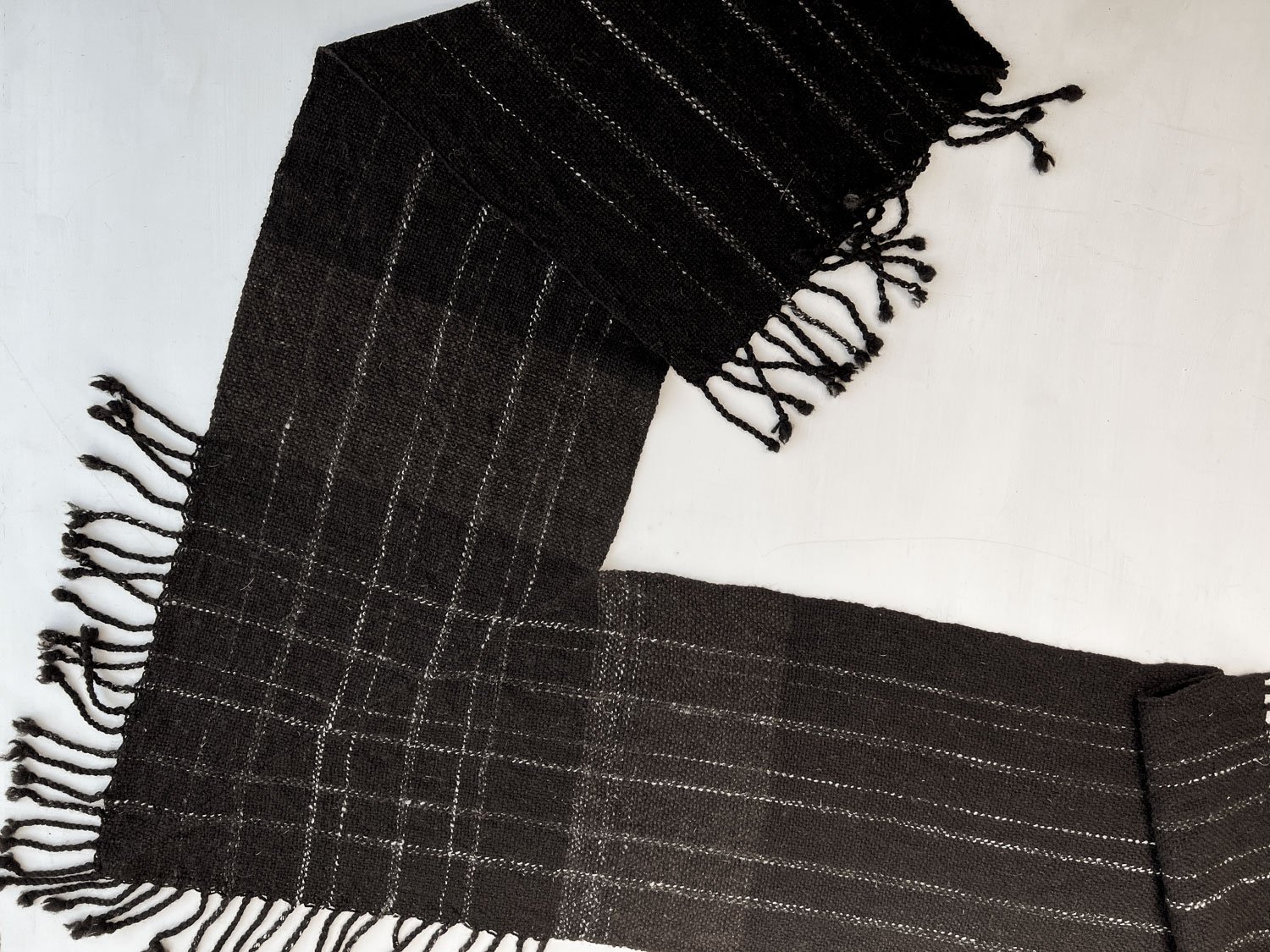
This is a handspun shawl I wove last summer using wool from Beauty, a black and white sheep. As I was weaving I knew that I’d run out of the black wool, so I spun some of Lupine’s wool to fill in. That is the gray part before the v of the shawl. (This shawl is for sale here.)
The original intent of this post was to show several ewes that I sometimes get mixed up—they are two horn lilac ewes and I think they all look similar.

This ewe is Meridian Foxy.

Meridian Vixen.

Meridian Lavender. Vixen’s and Lavender’s ear tags (ID tags in the left ear) are 6046 and 7046 so that is another way to get them mixed up.

Meridian Belle.
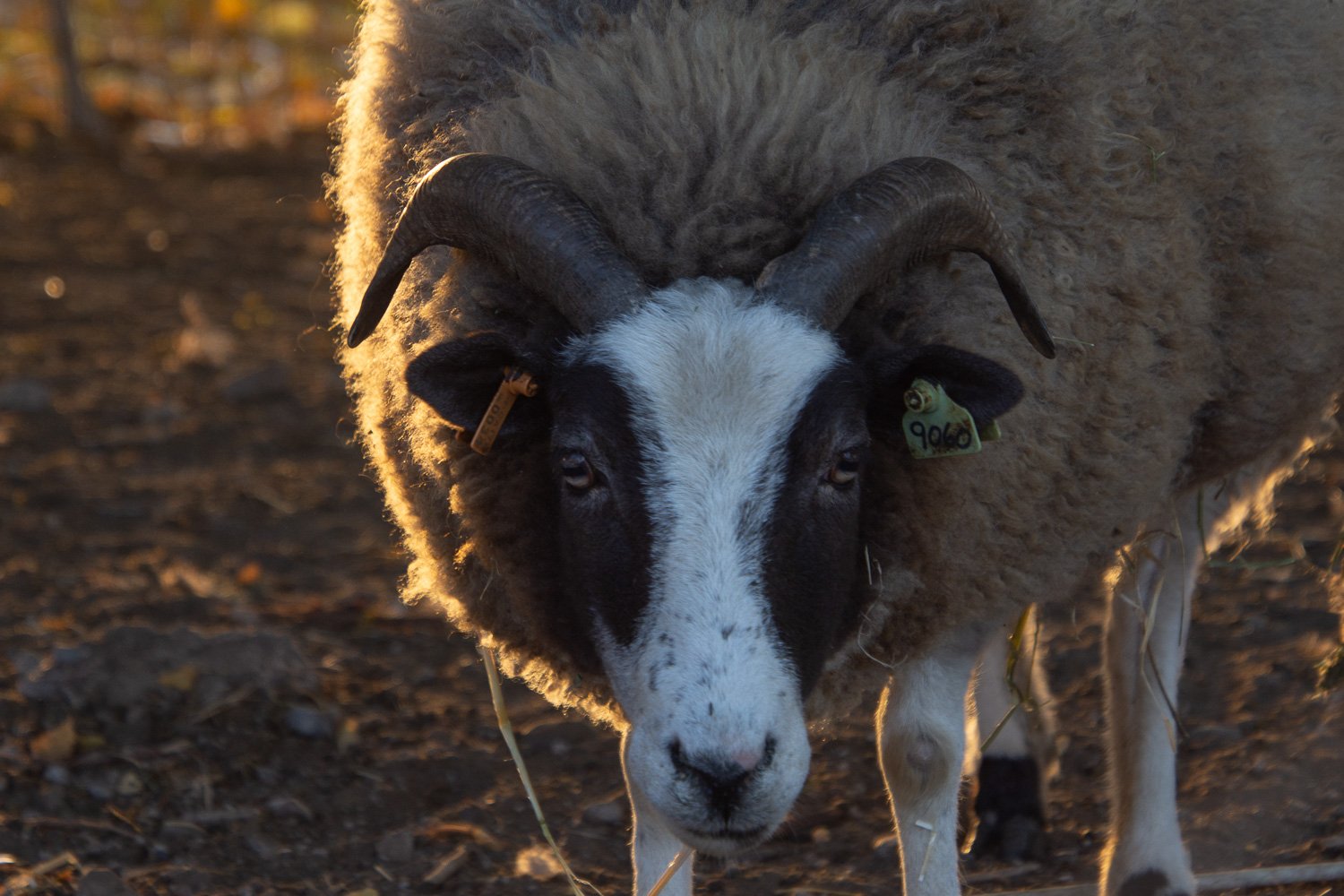
Meridian Bessie. Belle’s and Bessie’s numbers are 9006 and 9060, another reason to lose track.

The other ewes were all bred and born here. This is Patchwork Amara from Georgia.
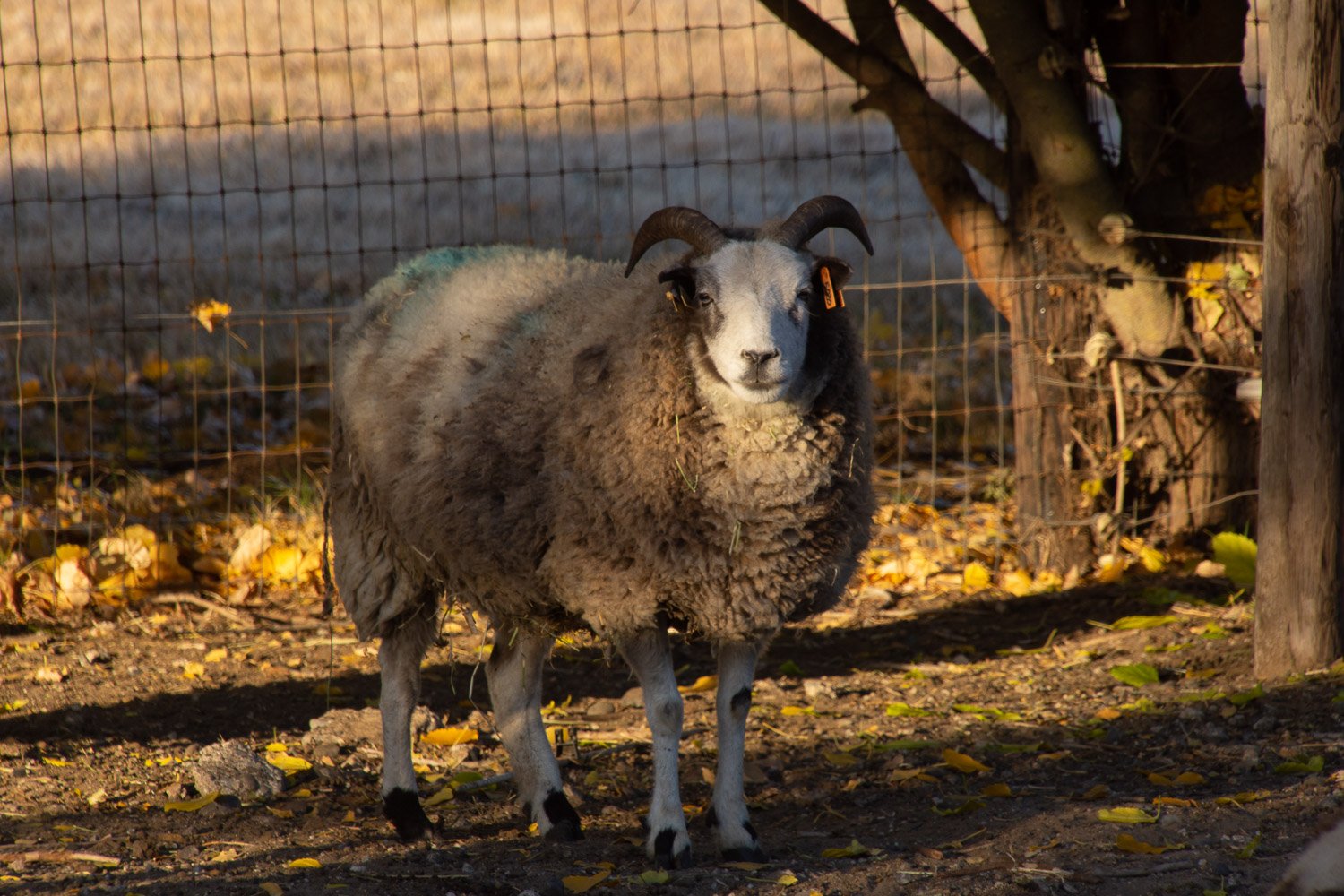
These are full body photos of the ewes above. This one is Foxy.

Vixen.

Lavender.

Belle.

Bessie.
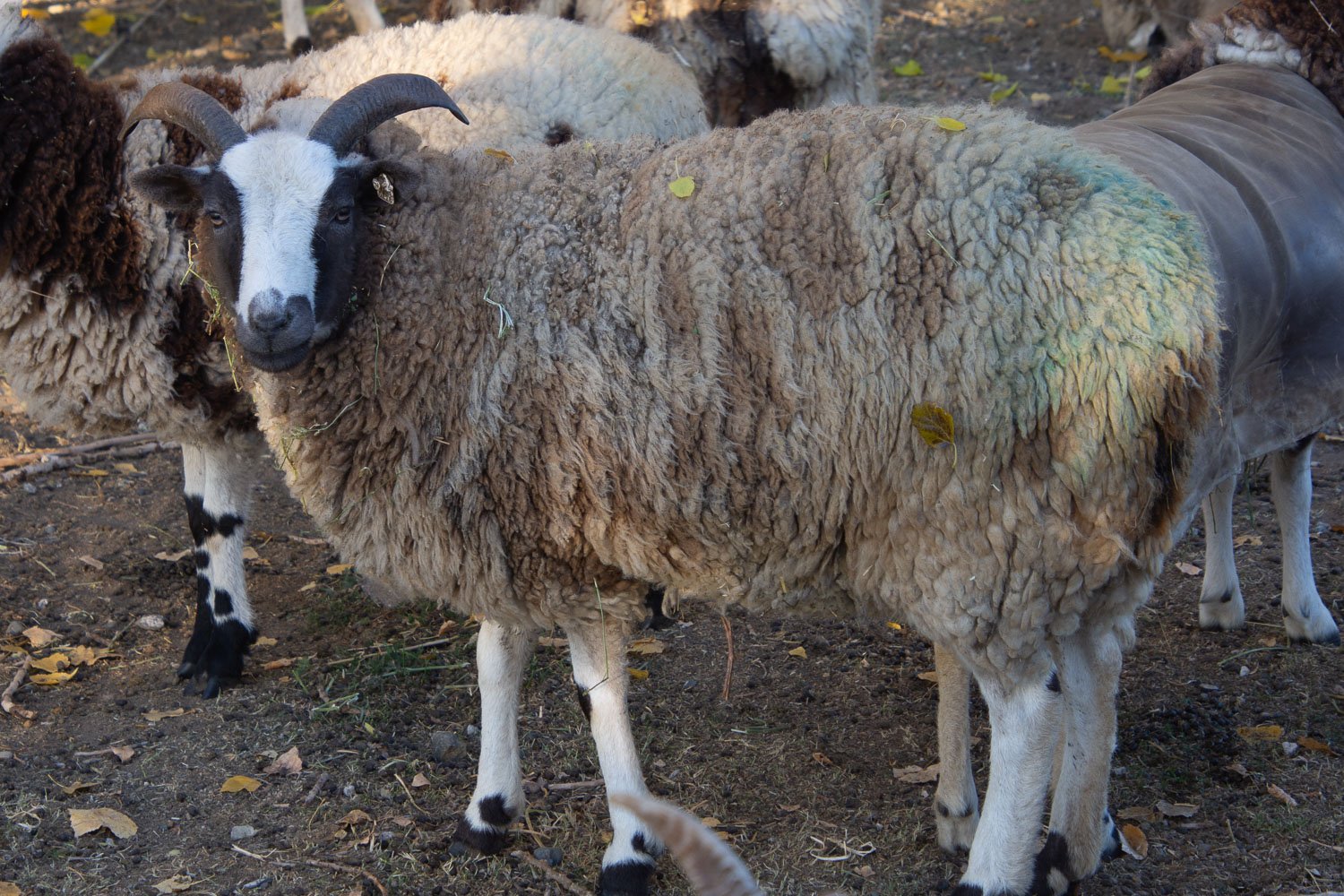
Amara.
Can you tell why I get these mixed up?

I won’t mix up these sheep, but they point out more of the variety of lilac coloring. From left to right this is Axis, Thorn, and Bravo. Axis is a yearling and the other two are March 2022 lambs. Thorn is a black and white ram, although his wool looks very dark brown in this photo—remember, that is because the tips are sunbleached. Axis and Bravo are both lilac rams but there is a big difference in the look of the wool.

Axis has the gray wool typical of my lilac Jacob ewes. Bravo’s wool is a bit browner. This photo makes him look a light brown, but that is those sunbleached tips again. Wait for shearing day for some interesting photos of the fleeces.
I’m organizing some of my photos and have a lot I took thinking of blog posts but I never wrote those posts. Here we go with some of the more recent Random Farm Photos.

Quinci is one of the 2021 ewe lambs born in March. Look at that fleece! We will shear in about 2-1/2 months and we’ll have some gorgeous fleeces.

This is the fleece of another ewe lamb who has mostly dark fiber.

Coating the sheep keeps the fleeces beautifully clean—free of VM (vegetable matter, which is usually hay in our system). But the problem with coats is that there is a lot of maintenance, especially in a horned breed. Coats need changing at least 3 or 4 times a year as the fleece grows in addition to when they are too torn to stay on the sheep. This is a patch job by one of the Farm Club members. Besides I don’t really like seeing them in coats. I’d rather see their wool. I always have a few though to have those wonderful clean fleeces.

Do you remember these three? I introduced them awhile ago. I got these ewe lambs in August and they are usually found together. From back to front that’s Hillside Grace, Patchwork Amara, and Patchwork Bettylou.

Ewes heading to pasture on an overcast morning.

This one is in the category of “sheep problem”. I had just put the two tame wethers in a separate area. Why this one decided he needed to be IN the feeder I don’t know. I couldn’t get him out without calling Dan. He couldn’t go forward because his hips were stuck. I couldn’t pull him out by myself. We did get him out and I put that feeder on its side for now so he wouldn’t try that again.

Another sheep problem. I found this after I put the rams back together. This is Barrett, the smallest ram. I had forgotten to take his marking harness off but that wasn’t the problem here. He got his head through the welded wire panel and couldn’t pull it out. It took two of us to manipulate his head just right while pushing on the wire to get him out.
These are examples of why it is a little worrisome when we leave and I am asking other people to take care of things here. In fact, I think it was when we were in Texas this summer that one of my friends had to deal with the sheep-in-the-feeder problem—same feeder, different sheep. She had to call on another friend who came over to help get the sheep out.

This is Meridian Silverado, Meridian Dylan, and Hillside Barrett. Barrett is the lamb with his head in the fence in the last photo. Dylan is now living in Nevada, and Silverado is here.

Axis is the other ram lamb who is staying here.
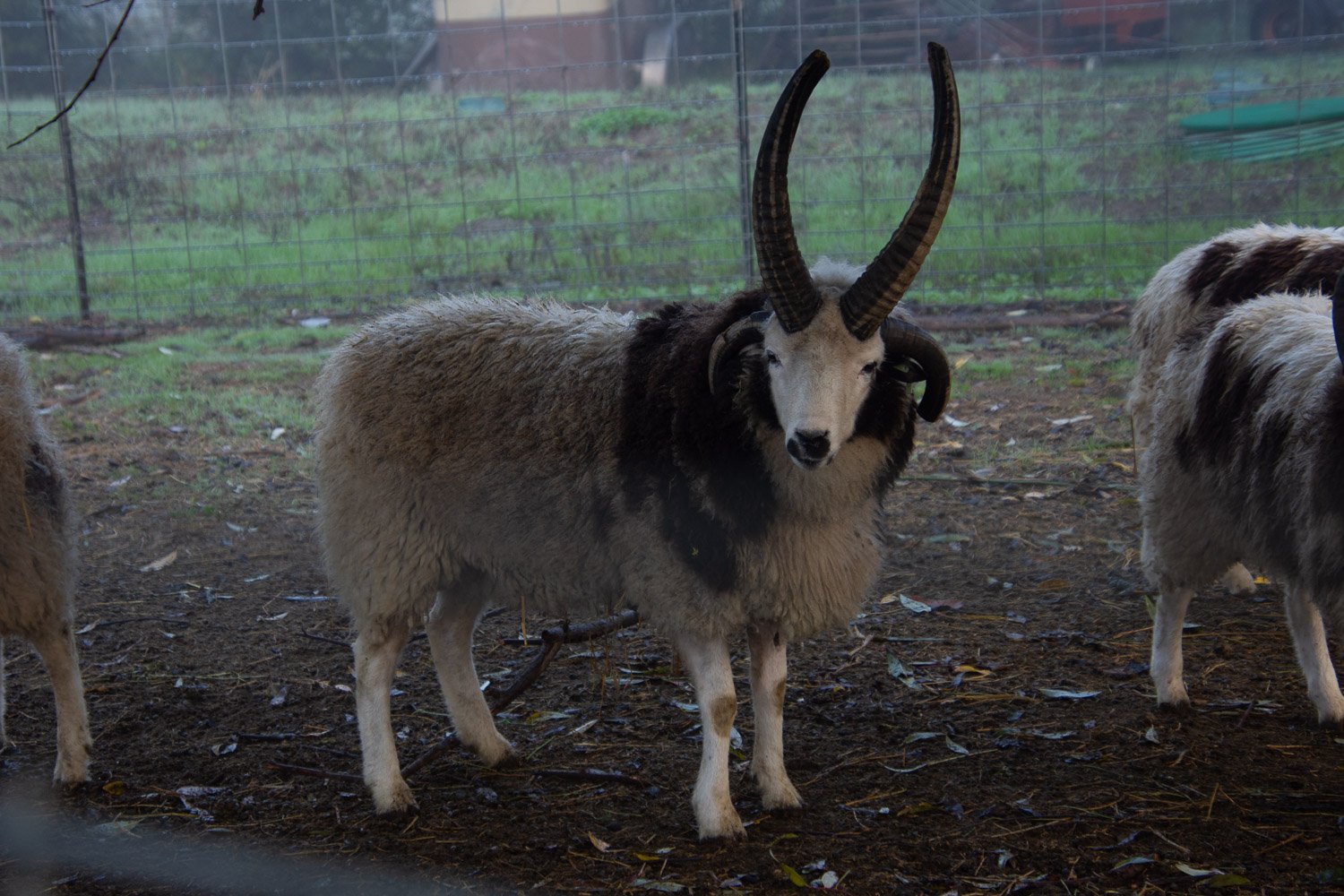
Rambler is the yearling ram.

One last photo. This is Sunny lying on top of me.
It’s been a year since Farm Club members came to the farm for shearing. The pandemic hit not long after and we have had no Farm Club activities. Shearing is this week and we had our annual Fleece Preview when Farm Club members could select their fleeces. It was small—only 3 members plus me—but we did the jobs that were necessary. We checked all the ear tags against my flock list, cleaned up those that were too dirty to read, and gave BOSE injections. We also clipped fleece samples from all the 2019 sheep (now with their full yearling fleece) for micron testing.

I’m way off my game here. I have only one photo of us working. However I have a few photos of gorgeous wool.

Pecan is a 2020 ewe lamb with a beautiful lilac fleece.

Rambler is a 2020 ram lamb.
I like to take photos of as many sheep as possible before shearing day to update my flock list. I wandered around with the camera a couple of days ago and was surprised that I got pictures of almost the whole flock. There are now 58 ewes, 3 wethers, and 6 rams.


These three are the youngest sheep, Pistachio, Sandie, and Pecan, so named after a Farm Club member suggested “nut” names for what I thought might be my nuttiest crop of lambs. Due to Covid, we didn’t have people coming to the farm and it took a lot longer to socialize the lambs and get them used to being handled. I eventually sorted out those that I planned to keep and worked on halter breaking and handling them a bit. Isn’t this a nice group of 4-horned ewes?

The most prolific ewe here is Ears, a BFL and Jacob cross. She was born in 2013 and has had 16 lambs.

Jade, everyone’s favorite sheep because she is so friendly. Jade was born in 2015 and I have two daughters and a granddaughter in the flock.

Jasper is Jade’s son, born in 2019.

Quora is Jade’s granddaughter from 2020.
Stay tuned for shearing photos on Friday!
At Meridian Jacobs farm we raise Jacob sheep and sell locally grown wool fiber, yarn, and handwoven goods. We teach fiber classes and sell Ashford, Clemes & Clemes, and Schacht spinning and weaving equipment. We encourage farm visits with field trips and our unique Farm Club.
Search blog posts since 2019. If the search says it can’t find a post try putting in your search word a second time. I don’t know why but the second time it seems to work.
Search the entire website, including older blog posts.